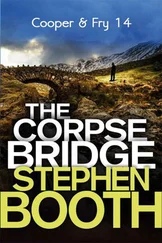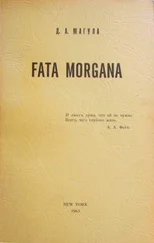Steven R. Boyett and Ken Mitchroney
FATA MORGANA
Dedication from Steven R. Boyett
To James Ray Boyett,
who bought me my first typewriter,
and to Carole F. Boyett,
who taught me to love the words inside it
Loved, admired, and deeply missed
Dedication from Ken Mitchroney
To Pfc Joseph Mitchroney, USMC,
my favorite World War II vet,
and to Jeannette Mitchroney,
matron of the arts
Loving parents, and my special link
to the Greatest Generation
fata morgana, noun : an unusual form of mirage involving almost any kind of distant object, often distorted unrecognizably, and visible from land or sea, polar regions or deserts, at any altitude, including from airplanes. The name (from the sorceress Morgan le Fay in the Arthurian legend) derives from a belief that these mirages were fairy castles in the air or false land created by witchcraft to lure sailors to their death.
B-17F Flying Fortress “Fata Morgana”
Two weeks ago in the Voice of America they had bombed an airplane factory in Brunswick and barely made it back. The Germans had that ground sewn up tight, flak so heavy the birds were walking on it. Even while you watched it shred the bombers in triple-group formation ahead of you, you found yourself admiring the precision placement. The krauts had a gee-whiz mechanical computer rangefinder that directed the 8.8-centimeter antiaircraft guns that fired a twenty-pound shell faster than the speed of sound. The shells went off at programmed altitudes like deadly popcorn kernels, spraying metal fragments that punched through aluminum sheeting, cut fuel and electrical and hydraulic lines, fouled props, and shredded engines and men.
And there was nothing to be done about it. The bombers had to stay level and on-course because the top-secret Norden bombsight had delicate gyros that wanted a Cadillac glide once the run over the Initial Point began. For maximum concentration of explosive damage, the bombers had to remain in tight echelon formation—which also maximized the devastation of the flak bursts. Once the bomb run began there was no deviating. No evasive maneuvers, no flying above or below the flak level. There was nothing you could do but ride it out and grab your lucky charms. The only good in that hot mess was that the flak kept the Luftwaffe out of their hair, because on the Brunswick mission the Messerschmitts had been on them like starving fleas on a fat hound.
Boney Mullen, their bombardier, had released with the lead bombardier’s drop over the target, and they were just banking off the run to dive below the flak when they caught a close burst low on the right side. It took out Number Three engine and punched through the ball turret and shot chunks into the fuselage.
Voice of America was a hangar queen. She’d thrown a rod on the mission before this one, and Wen Bonniker, their flight engineer, had asked Farley if he could requisition a junked B-17 for parts. “Then we could fly that one instead,” he’d drawled, straight-faced. “’Cause fixing this one’s like taking a gator to the vet. You’re just making it better so it can try to kill you again.”
Captain Farley had feathered Number Three after it got creamed. Then he saw that it was leaking oil. At least the goddamn thing wasn’t on fire. In the copilot seat beside him Lieutenant Broben called out the oil-pressure drop and reported that fuel was looking okay. He shut off Number Three fuel line and Farley upped throttle on the remaining engines. Higher RPM would eat up fuel, and the drag on Number Three would eat up more. It was a long way back to England, and now the bomber would be trying to turn right the entire way. TDB, too damn bad.
Farley got on the interphone for a status check. The crew reported that the bird was holier than the pope, but Number Three engine seemed to have got the worst of the damage. Handsome Hansen hadn’t reported back from the ball turret and Farley told Garrett to go check on him. Garrett banged a wrench on the turret hatch and didn’t get a return bang, so he cranked the turret and undogged the latches and swung the hatch down and stared into the tiny space for a moment. Then he dogged the hatch again and reported that the ball turret was out of commission and that Hansen had been killed by flak. He did not report the jagged, foot-wide hole in the side of the turret, or the bloody chunks of Hansen coating the inside in a kind of frozen stew that was in no way identifiable as something that, ten minutes earlier, had been a nineteen-year-old with big white teeth and a total inability to tell when his leg was being pulled.
With an engine out the Voice of America couldn’t keep up with the flight group, so Farley had dropped out of the formation. He and Broben watched the other bombers pull ahead, stark silhouettes in the midday sun. They counted four B-17s missing from the group, apart from the Voice . Two of the remaining bombers were burning oil or worse, and trailed dark black plumes that would be a roadmap for any Luftwaffe pilots who sighted them.
Broben had shaken his head in disgust and said, “Why don’t we skywrite directions to the airfield while we’re at it?”
Farley nodded grimly and gave the homebound formation a wistful two-fingered salute. Then he told the crew to keep a sharp eye out for enemy fighters. Straggling alone apart from the bomber group the Voice was now a flying bullseye. The German pilots would go after her like wolves after a stray yearling. There’d be no help from other bombers, and the Voice was still hours away from picking up a fighter escort.
Near the coast north of Rotterdam they were spotted by four Bf 109s. Farley had taken the B-17 down below ten thousand so that the denser air would give the fuel more stretch and the crew could take off their oxygen masks. The yellow-nosed Messerschmitts broke formation and came at them from high and behind, four o’clock and eight o’clock. The Voice filled with staccato hammering from the .50-caliber Browning machine guns at the waist and tail and upper turret. The German fighters were going for the damaged wing. Oil had sprayed everywhere, and one good tracer round would light her up like a fuse leading straight to the fuel cells. Instant Fourth of July.
But Everett scored a hit on the Messerschmitts’ first pass, firing from the bomber’s right waist and carving chunks out of the canopy of the lead fighter. The Bf 109 veered off and corkscrewed down into the pale green Dutch countryside.
The other three fighters had immediately broken off the attack. That shot of Everett’s had been the lucky first-round haymaker that ends the fight right then and there, and the remaining Luftwaffe pilots seemed only too happy to turn tail. Maybe it was dinner time.
Garrett and Everett usually went at each other like an old married couple, but when the 109s broke off, Garrett—a heavyweight wrestler in high school a few years ago—picked Everett up in a bear hug and carried him to the back of the bomber, laughing and yelling and calling him one terrific son of a bitch.
Читать дальше














